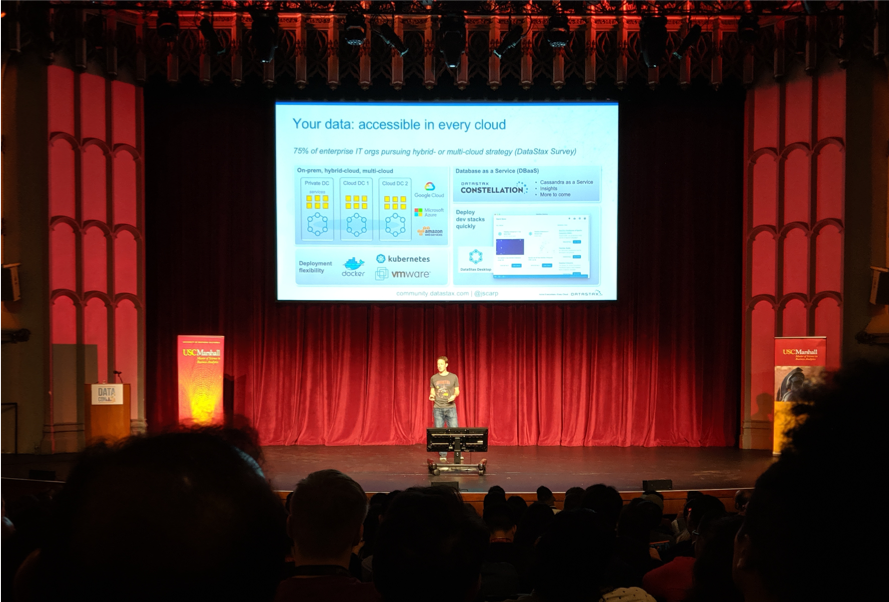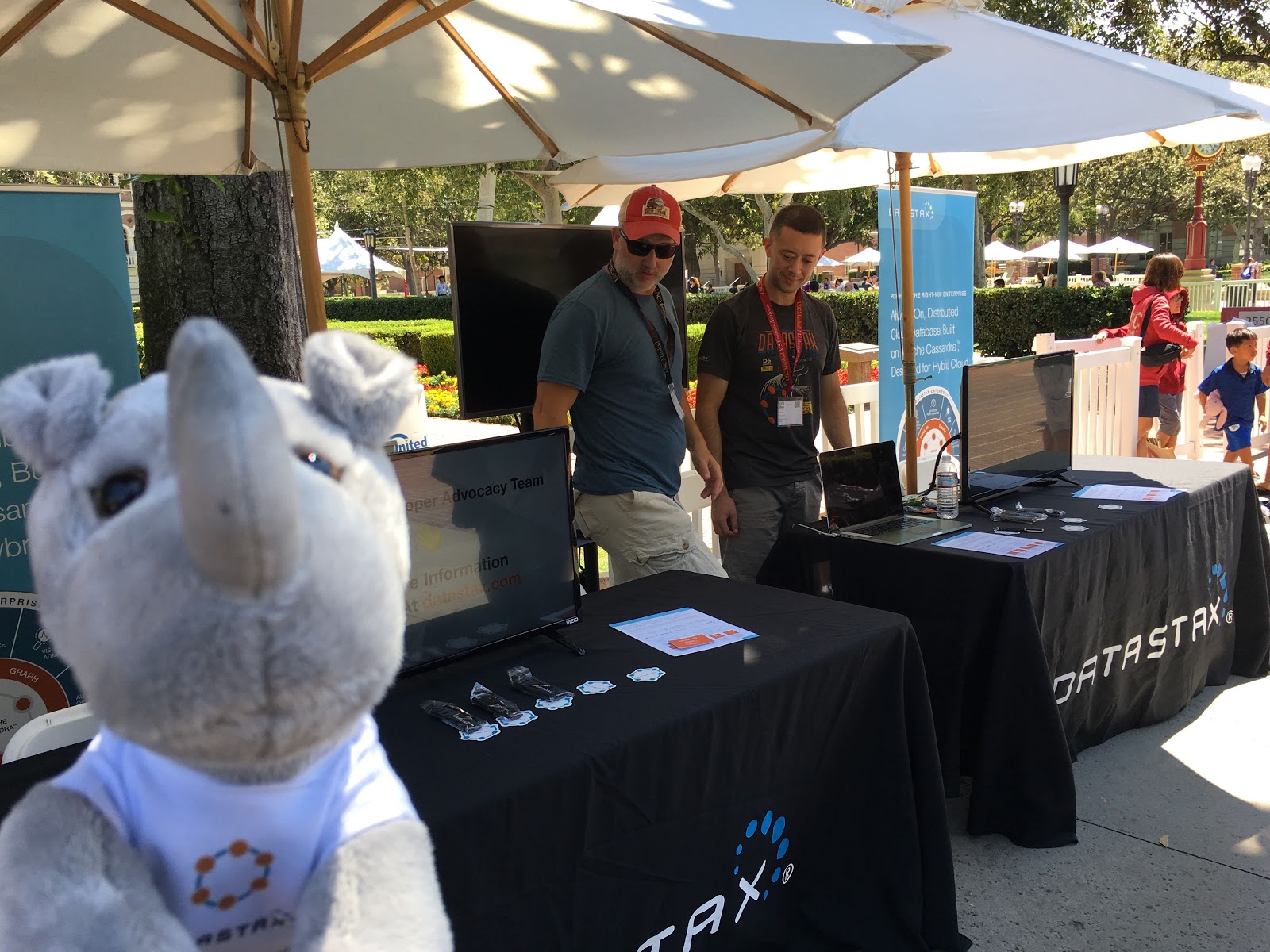The 3 Data Trends Developers Need to Know

Last weekend, I spoke at Data Con LA, an event DataStax has supported for several years, this year as a platinum sponsor.
For those who weren’t able to make it, I figured I’d share a high-level overview of my keynote presentation, which was about three major data trends that affect developers and what DataStax is doing in response to each of them.

(You can also read about other data management trends here.)
Let’s jump right in.
1. Working with data needs to be easy and obvious
According to a recent Stack Overflow survey, 41 percent of developers have less than five years of professional experience, while nearly two-thirds have less than nine years. In addition, we’re rapidly approaching the point where the majority of developers will be based outside of the U.S. and Europe.
With this massive influx of developers into the industry, it’s more important than ever for all of us to help make working with data easy and obvious.
At DataStax, we work hard every day to make that a reality. While we’re known as the driving force behind the Apache Cassandra™ distributed database, and our enterprise version, DataStax Enterprise, we also have a history of providing great developer tools including:
- Drivers for Apache Cassandra and DataStax Enterprise, which are available in several programming languages, and
- DataStax Studio, a notebook-style tool that brings together data scientists and engineers around data modeling, exploration, and visualization.
We’re also super excited about AppStax, a new tool for rapid application development that automatically generates microservices with REST or GraphQL APIs based on your data.
Add it all up, and DataStax is supporting developers of all experience levels by making it incredibly easy to work with data.

2. Data must be freely accessible in whatever cloud it’s needed
We recently found out that 75% of IT groups are pursuing a hybrid or multi-cloud strategy. This enables them to leverage the best of both worlds, i.e., the scalability and cost-effectiveness of the public cloud and the privacy and security of the private cloud.
At DataStax, we believe that Cassandra is the ideal database for replicating data across multi- and hybrid cloud environments—whether that’s in your own private data center, public cloud regions, or a combination thereof.
To this end, we’re thrilled to be bringing Cassandra as a service to market this year as part of our Constellation suite of cloud products.
If you need to operate your own clusters, DataStax can help there, too. We’re continuing to provide our DSE Docker containers and we’re working on a Kubernetes operator to make operations easier for you.

3. Data must be accessible through the right API for each application
There’s been a growing trend toward multi-model databases in recent years. These databases help developers build powerful applications more quickly by providing APIs that support multiple ways of accessing data, including tabular representations such as SQL or the Cassandra Query Language (CQL), document representations such as JSON, and graph representations such as Gremlin from the Apache TinkerPop project. Data needs to be accessible through the right API for each application you build.
We see increasing interest in the “graph way of thinking” in particular. Gartner says that the graph database market will double every year through 2022, for example. This is due to the fact that graph databases have the unique ability to leverage relationships between disparate data sets.
DataStax helps here as well.
The next generation of our DataStax Enterprise Graph database takes another step forward in multi-model flexibility, allowing you to access the same underlying data via the Gremlin graph language from Apache TinkerPop, CQL, or through SQL via Apache Spark. See the talk “DSE Graph.Next: The Cloud-Native Distributed Graph Database for Solving Graph Problems” by Jonathan Lacefield and Dr. Denise Gosnell from the DataStax Accelerate 2019 conference for a sneak preview.
Simply put, DataStax knows what the future of data management looks like and we’re sharply focused on making sure developers have the precise tools they need to build transformative applications—today and tomorrow.
Data’s Day in the Sun
Throughout the rest of the day at Data Con LA—which was held on the beautiful campus of the University of Southern California—we had a ton of conversations at our DataStax booth with students, local startups, and industry folks and were able to hear more about their use cases and data challenges. It’s great to see this conference grow leaps and bounds each year and I can’t wait for next year’s event!




